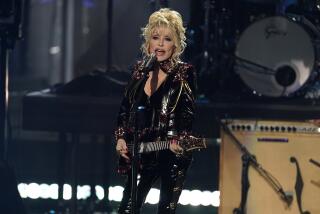Rating the Top of Pop’s Freshmen
- Share via
What was rock’s greatest freshman class?
Did it arrive during rock’s infancy in the ‘50s, when the music seemed so innocent--the time of Elvis and Chuck and Jerry Lee?
Or did they surface during the explosive ‘60s, when sociology became as important as the beat--the days of the Fab Four, Janis and Jimi?
Or how about the ‘70s when the young punks wanted new heroes and launched an attack on the Pop Establishment--the era of Johnny Rotten and the second Elvis?
The most perplexing problem in defining rock’s greatest rookie year is agreeing on what year many key artists arrived.
Do you, for instance, include Elvis Presley in the Class of ’54 (the year he began making the Sun Records singles in Memphis that are now among the most prized ever in rock) or in the Class of ’56 (the year he moved to RCA Records and became a mainstream pop sensation with “Heartbreak Hotel”)?
The Beatles present an even thornier problem. Do they belong in the Class of ’62 (the year their first single entered the charts in England), or 1963 (the year they began dominating the charts in England) or 1964 (when they made their splash in America)?
Here’s one solution: the artists’ “arrival” is tied to the year in which their album or single first entered the U.S. pop charts.
On that basis, the year with the most Rock and Roll Hall of Fame-caliber newcomers was 1967 with 11 artists, followed by 1957 with nine artists and 1969 with eight. Three other years--1956, 1964 and 1968--contributed six Hall of Fame level artists or bands.
The classes by year:
1967--the Bee Gees, Buffalo Springfield, Cream, Doors, Grateful Dead, Al Green, Jimi Hendrix, Janis Joplin (with Big Brother & the Holding Company), Pink Floyd, the Velvet Underground, Frank Zappa.
1957--Ray Charles, Eddie Cochran, Sam Cooke, the Everly Brothers, Buddy Holly, B.B. King, Jerry Lee Lewis, Rick Nelson, Jackie Wilson.
1969--Crosby, Stills & Nash, the Flying Burrito Brothers, Jackson 5, Led Zeppelin, Bob Seger, Rod Stewart, the Stooges, Neil Young.
1956--The Coasters, Little Richard, Roy Orbison, Carl Perkins, Elvis Presley, Gene Vincent.
1964--The Animals, the Beatles, Four Tops, Kinks, Rolling Stones, Temptations.
1968--The Band, Joe Cocker, Creedence Clearwater Revival, Fleetwood Mac, Joni Mitchell and Sly Stone.
Looking at the ‘70s, three future Hall of Famers--Bob Marley, Bruce Springsteen and Patti Smith--made their pop chart debuts in 1975, but the most active year was 1977, which benefited from the British punk explosion.
Because radio programmers and the media were much more aggressive in finding new acts, it makes sense when talking about post-’76 artists, to begin associating their “arrival” with the year their first album was released on a major label in England or the United States.
Under that guideline, the Class of ’77 included Blondie, the Clash, Elvis Costello, Peter Gabriel as a solo artist, the Talking Heads and the Sex Pistols.
Another banner year was 1972, which introduced Jackson Browne, the Eagles and Steely Dan to the charts. The ‘80s? It’s too early to judge the Hall of Fame potential of most acts, but keep an eye on 1983, which introduced the Eurhythmics, Madonna and R.E.M.
More to Read
The biggest entertainment stories
Get our big stories about Hollywood, film, television, music, arts, culture and more right in your inbox as soon as they publish.
You may occasionally receive promotional content from the Los Angeles Times.










